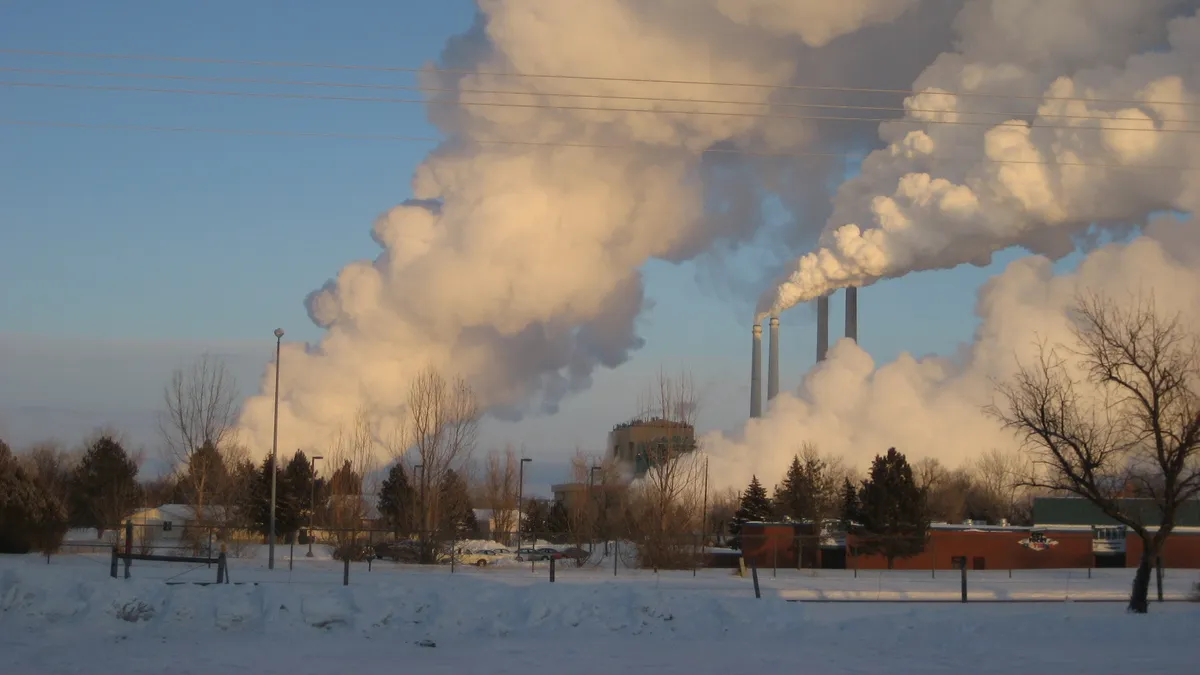Dive Brief:
-
Coal consumption in the United States is anticipated to hit its lowest levels since 1979, according to an analysis by the U.S. Energy Information Administration (EIA) released Tuesday.
-
By the end of 2018, the resource's use in the power sector is expected to drop 4% below 2017 levels, and fall another 8% in 2019. Coal consumption reached its peak in 2007 when the power sector was generating 313 GW, and consumption is projected to fall 44% below that level this year.
-
EIA cites natural gas prices as "one of the main drivers" of coal plant retirements. 14 GW of coal are slated to be retired this year, making it the second highest year for retirements since 2015, when EPA's Mercury and Air Toxics Standards were implemented and power generators closed a number of low-capacity plants early.
Dive Insight:
Aging coal facilities are becoming less economic and retirements are rising as more power generators turn toward cheaper generation. EIA's most recent analysis implies more utilities are facing the new economic reality where coal generation is no longer the cost-friendly option.
Prices for natural gas have remained consistently low since it became a more prominent source of generation in 2007, according to EIA. This year, almost 66% of the approximately 32 GW of new resource capacity in the U.S. will be natural gas.
The fuel will continue to see demand growth, allowing fossil fuels to retain a 77% share of global energy demand in 2030, even as demand for coal halves by 2040, a recent WoodMac report find
In total, 137.6 GW of coal have been retired and 213.5 GW remain, according to the Sierra Club. Four coal plants have been retired in November, representing "unprecedented strides," the group said in a statement.
Those retirements are driven largely by the resource's inability to compete in power markets, a case numerous analysts have made. Research by the Rocky Mountain Institute is looking "to make the cold hard economic case to regulators and customers that the high cost of coal-generated electricity is not good for business," RMI Senior Fellow Bruce Nilles told Utility Dive in October.
Natural gas isn't the only resource giving coal a run for its money. A November report by Lazard found that even without federal subsidies, the cost of wind and solar is cheaper than coal. Many parts of the U.S. are still dominated by coal generation, particularly across the Midwest, but Northern Indiana Public Service Co. in October found it could save its customers more than $4 billion over the next 30 years if just 15% of its generation portfolio is coal in 2023 and the resource is eliminated entirely by 2028.
Although research widely finds that coal is not economically viable, the future of the resource is firmly cemented in federal energy debates. Saving coal was one of President Trump's campaign promises and the fuel has strong support from his constituents. A proposal to bail out coal and nuclear plants was floated this year by the president's Department of Energy, but in October it was reported that the plan is stalled in the White House, for now.
"[T]he Trump Administration can't stop this country from continuing to move beyond co[a]l," said Senior Director of Sierra Club’s Beyond Coal campaign Mary Anne Hitt in a statement. "The EIA's announcement shows major progress for communities across our country who've worked feverishly over the past decade to shift America away from dirty, expensive coal plants."















